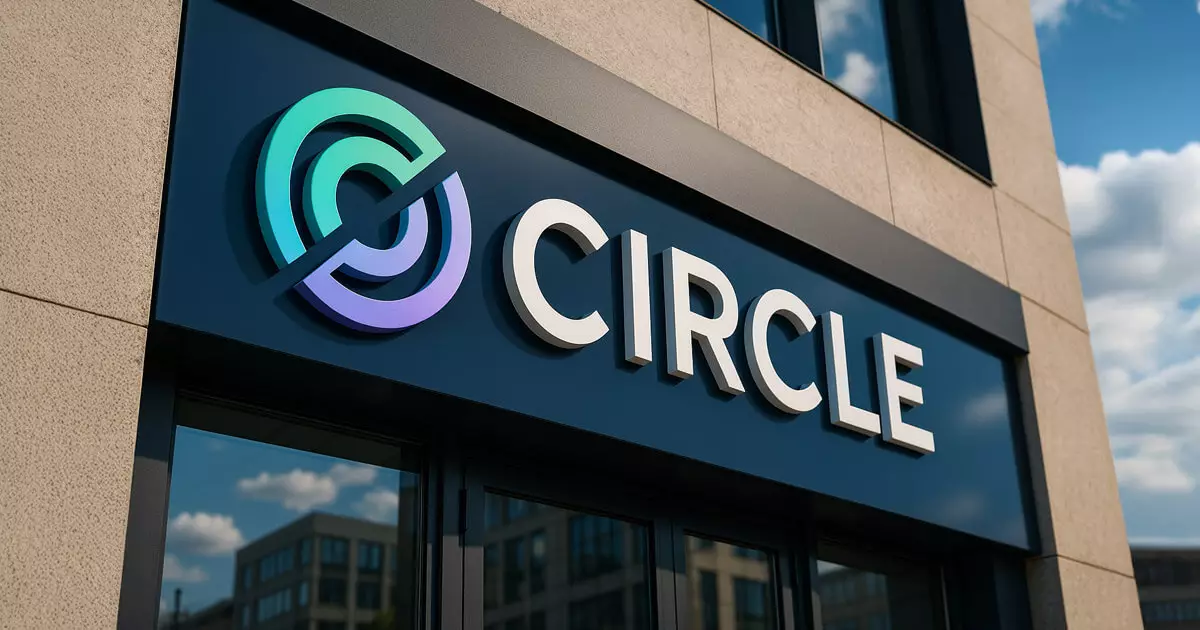Circle’s aspiration to go public marks an ambitious pivot in a rapidly evolving cryptocurrency landscape. Initially, the financial community viewed the prospect of an initial public offering (IPO) with enthusiasm, bolstered by a projected valuation of $5 billion. However, this optimism must be tempered with skepticism as rumors of acquisition talks with crypto giants Coinbase and Ripple surface. Such discussions suggest that Circle may be standing at a crossroads, illustrating both the fragility of its pre-IPO plans and its dependence on outside power players to dictate its future.
The process of going public is generally heralded as a sign of maturity for a company, but when an organization finds itself exploring acquisition options mere months after filing for an IPO, questions arise about its internal stability and confidence. What motivates a company to seek out buyers while simultaneously aiming to attract investors? The answer may lie in unspoken challenges Circle faces which are evident in the precarious balance it maintains with its counterpart, Coinbase.
The Inexorable Link: Circle and Coinbase
At the heart of the negotiation rumors is the complex interdependence between Circle and Coinbase. Their alliance traces back to the governance structure established in 2018, which has shifted dramatically. The dissolution of the Centre Consortium introduces a new dynamic—while Circle now controls the governance of the USDC stablecoin, it remains tethered to Coinbase financially. This relationship essentially ties Circle’s operational viability to Coinbase’s platforms, a fact that diminishes its leverage as it seeks to navigate the uncertain waters of an IPO.
Circle’s S-1 filing underscores the impact of this financial liaison. Revenue generated from USDC transactions is shared 50/50, but when USDC is held on Coinbase’s platform, the exchange reaps the full reward. This arrangement hints at how dependent Circle has become on Coinbase’s operational framework. Should Circle aim to broaden its partnerships or expand its market share without Coinbase’s consent, it risks antagonizing its most valuable ally. Such constraints raise a red flag for potential investors who might view Circle as more of a subsidiary than an independent entity.
Ripple’s Half-Hearted Offer: A Misjudged Bid
Compounding Circle’s challenges, Ripple has apparently attempted to penetrate the fray with its own acquisition offer, valued between $4 billion and $5 billion. Circle’s rejection of this bid can be seen as a double-edged sword. On one hand, it signifies that Circle perceives its worth above Ripple’s valuation—a bold admission of confidence in its future prospects. On the other hand, it raises eyebrows about the rationale behind eschewing what could have been a substantial lifeline during uncertain times. While Ripple’s growing cache of XRP presents a sense of security, it is hardly the silver bullet that Circle might need.
The fallout from this rejected bid speaks volumes. If Circle chooses to dismiss Ripple, it may also be turning its back on a lucrative swift exit strategy that could have provided financial stability. Additionally, the market’s competitive landscape is unforgiving. As well-funded rivals continue to emerge, the pressure on Circle to demonstrate both profitability and innovative capacity intensifies exponentially.
The Insidious Nature of an IPO Amid Potential Sales
The dichotomy between pursuing an IPO and negotiating potential sales is a perplexing gambit. It reveals an underlying volatility in Circle’s business model—a friction between the desire for independence and the pragmatic need for partnerships in a cutthroat industry. This precarious strategy could inadvertently signal instability to investors who are already skittish about the crypto sector’s future.
As Circle’s leadership contemplates this critical juncture, they must consider: what future do they envision? Is the goal simply to become a player in the vast field of cryptocurrencies, or is there a vision for sustainable, expansive growth that aligns with their initial ambitions? The outcomes of these deliberations will ultimately determine the viability of Circle’s IPO—if they ultimately proceed as planned.
The narrative being woven is not just a tale of financial ambition; it’s a stark reminder of the challenges inherent in the cryptocurrency space. In a world where established giants wield disproportionate influence, Circle’s journey serves as a cautionary tale, illuminating the constant battles faced by those striving to carve out their own identity amid overwhelming odds.















